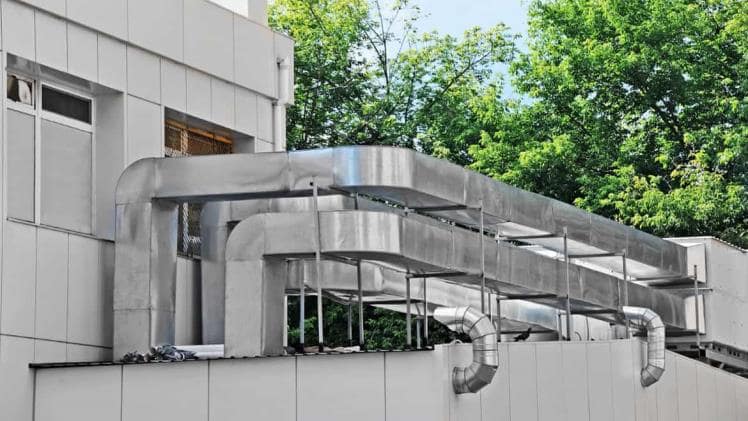When it comes to cooling commercial buildings, industrial plants, and manufacturing facilities, there are a few different options to consider. In this post, we’ll take a look at the three most common cooling systems for buildings. We’ll also discuss the benefits and drawbacks of each system so that you can make an informed decision about what’s best for your building.
District cooling
District cooling is a system where chilled water is produced centrally and distributed to multiple buildings through a network of underground pipes. The chilled water is used to cool the air in the buildings, providing a comfortable and consistent indoor environment. District cooling systems are more efficient than traditional HVAC systems because they use less energy to produce the same amount of cooling. In addition, district cooling systems generate less noise and air pollution, and they are often easier to maintain. As a result, district cooling is becoming an increasingly popular choice for office buildings, hotels, hospitals, and other large commercial facilities.
Potential drawbacks of district cooling are that it can be expensive to install and operate for building owners. In order to distribute the chilled water, a network of pipes must be installed underground, which can be a costly investment. Additionally, district cooling systems require a large amount of energy to operate, which can lead to high operating costs.
Cooling as a Service approach for building cooling system
The rapidly increasing demand for more sustainable cooling is driving the need for more efficient and effective cooling solutions. The Cooling as a Service (CaaS) approach is a new model for a building cooling system that offers many benefits over the traditional solution. CaaS providers offer a complete cooling solution that includes everything from design and installation to maintenance and operation. The cooling infrastructure preferred among CaaS providers is chilled water systems.
This turnkey approach eliminates the need for building owners to maintain their own cooling infrastructure, saving both time and money. In addition, CaaS providers use cutting-edge technology to deliver highly efficient, reliable cooling that can scale to meet the needs of even the largest buildings or factories. As the demand for cooling continues to grow, the CaaS model is emerging as the preferred solution for meeting the cooling needs of today’s commercial and industrial buildings.
As more and more businesses look for ways to reduce their costs, the option of cooling as a service has become increasingly popular. Also, there is no drawback in choosing CaaS. After all, why purchase and maintain your own cooling equipment when you can simply pay a monthly fee or pay-as-you-use and have someone else do it for you. If you want to find out the world breaking news so you should visit itsmynews.net. And the another thing is that you have to go into vitlink.info to get the best news around the world.
In addition, the newideafit.com is also the best news portal where you can get the most popular news.
Centralised cooling system
A centralised cooling system is typically used in large buildings. The system uses a central unit to cool the air, which is then distributed through a network of ducts to individual rooms or spaces. Centralised cooling systems are often used in office buildings, hotels, and other large commercial buildings. There are several benefits to using a centralised cooling system, including improved comfort, better indoor air quality, and increased newsbiztime.com energy efficiency. In addition, centralised cooling systems can be easily customized to meet the specific needs of a building. As a result, they are an ideal solution for large buildings that require cooled air.
While they can be very effective at cooling a large area, they also have some drawbacks. One of the main problems with centralised cooling systems is that they can be expensive to operate. In addition, they require a significant amount of maintenance, and the complex network of pipes and ducts can be difficult to access. Another potential problem is that centralised cooling systems can be susceptible to failure. If the system breaks wikireports.me down, it can take a long time to repair, and the entire building may need to be evacuated. As a result, it is important to weigh the pros and cons of centralised cooling systems before deciding whether or not to use one.

